5 Life lessons I learned as a Yoga student in the time of COVID-19
When I first heard about the coronavirus disease 2019 (COVID-19) breaking out in China, I thought it was an isolated case that would soon blow over. The virus started in Wuhan. Surely, it would not reach the Netherlands (my current residence country), or Philippines any time soon.
Wrong. In February, the first case in the Netherlands was reported. By then, the virus has already reached some countries in Europe and it was making more noise and impact than the world has anticipated. Still, I felt very detached to what’s happening.
The Netherlands had a very practical approach towards COVID-19 during the early months. People did not really take it seriously, neither did I. Our lives went on as usual and some of my friends would tease me when I would overreact about news.
By March, things became even more serious as cases in Europe exponentially increased week by week. Europe became the new epicenter of the outbreak in March, and the Netherlands was in the top 10 countries with most number of cases. As of writing, we have reached a 45,000-mark of confirmed COVID-19 cases, with over 5,000 deaths.
And as COVID-19 cases climbed in Europe, so did my anxiety peak. My fiancé and I decided to cancel our May wedding. My partner also lost his job, while I worked from home as stricter quarantine measures were put in place in the Netherlands.
A 1.5-meter society was gradually born out of the need for social distancing. I remember going to our local grocery to find shelves of bread emptied and the toilet paper and sanitizer nowhere to be found. My anxiety reached its tipping point when I started to have episodes of meltdown and insane cravings of sugar and tobacco.
I knew that I needed a physical outlet to empty my thoughts. I read about an article about yoga and how meditation and conscious mindfulness could help deal with anxiety. That was when I decided to embark on a 30-day yoga journey by following an online yoga daily class.
I followed Youtube yogi Adriene after doing some research. As a beginner with zero experience in yoga practice, finding the right teacher was a crucial mission. And so was finding a good yoga mat. I went to several sports store before I got myself a mat; apparently the Dutch were also turning to yoga and indoor sports during this period.
Day 1 was a breeze. I enjoyed the idea of being able to meditate and practice yoga from the comfort of your home. I was also filled with a lot of determination and energy, so having a positive attitude was not an issue.
Soon, I realized that determination alone would not cut it. One should have a purpose if one wishes to complete the 30-day yoga journey.
Yoga does not only challenge the will of the mind, it also challenges your physical state.
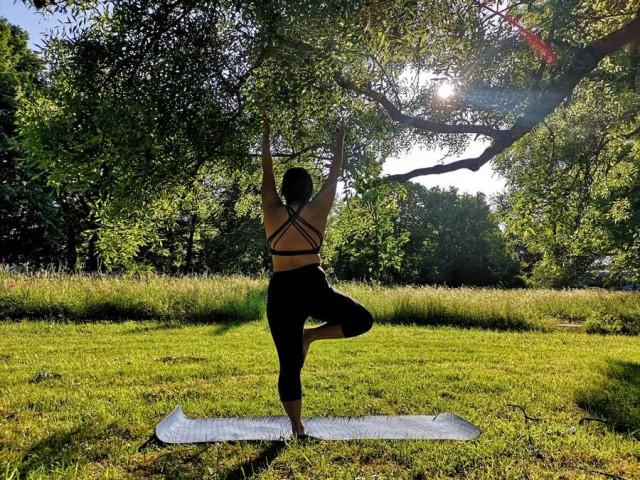
It seems like a long time ago when I sat on my mat for the first time. Now I am on Day 60, and I would like to celebrate my journey by writing and sharing some of my learnings during this two-month practice.
If you were a doubter like I am, do not fret. Yoga is like a concerned friend, almost like a sister. It asks questions, but not in a condescending way. It makes you rethink and reassess, but not in a judgmental manner.
1. Your body is a temple
In the first few days, I found it extremely challenging to find balance and coordination. Prior to yoga, I was not an active person. I am not physically coordinated and I hated exercise.
If I would embark on this journey, I told myself that I would also take care of my physical health. That was when I also started doing some workouts at home. Yoga helped me confront my insecurities about my body. I learned to embrace my curves, my shortness of breath and all my ill-balanced coordination.
In order for the mind to do its part, my body also has to play a role. It doesn’t need sweat-busting, strenuous activities, but conditioning your muscles and heart is a good compliment to yoga practice. Exercising creates a ripple benefit effect on your yoga practice, and vice versa. It helps your breathing to be more stable, your muscles stronger, and your heart steadier.
I am proud to say that yoga has inspired me greatly to regularly exercise. It was my gateway drug to doing more exercises such as jumping (rope) and running. Your body is a temple, treat her like one.
2. Listen to your body
There are some days when I would feel so shitty that I refused to show up on the mat. I would feel guilty about it, sometimes even “punishing” myself the next day by doing two yoga sessions. While the missed day was technically compensated, I didn’t feel good about it. I asked myself whether that was the right thing to do.
In the end, I realized that it’s not. Listen to your body and don't punish yourself for not being motivated enough. Accept that you have your limitations and that you are not a perfect student. Only then can you get the maximum result from the practice.
Whenever I feel too sick or too demotivated to show up on the mat, I would always assess and ask myself twice, thrice even. Listen to your body, it knows when it’s overworked. The more important thing is that you bounce back when you’re ready and to continue what you started.
Rest if you must, recover, replenish, but do not quit. Know that you have a choice, and that you can be in full control of your mind and body.
3. Practice not to become perfect, but to become better
During the first few weeks, I would always get disappointed if I wasn’t able to reach my toes in a forward fold (Uttanasana), or if I couldn’t execute a certain movement perfectly, like resting your feet on a downward facing dog (Adho Mukha Shvanasana).
Society has conditioned our minds to become the perfect version of ourselves, to the point that any detour or mistake would force us to become hard on ourselves.
Yoga practice has taught me that life isn’t a competition or a race to the top. It sounds like a cliché but the only person you have to beat in this game is yourself, and you don’t even have to win. You only need to progress, one day at a time.
In the photo below of a downward facing dog, you may barely see a difference in my form. However, if you look closely, you’ll see that I was able to land my feet on the ground after weeks of practice. Fun fact: I couldn’t even straighten my legs when I first started!
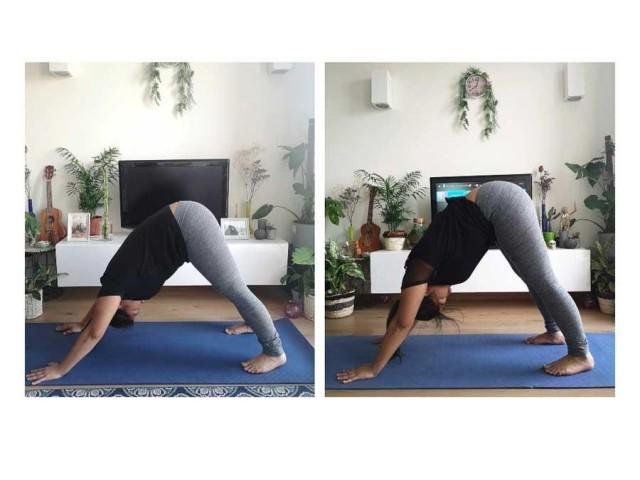
I have noticed that through practice, I have become healthier, steadier and more flexible. I tried to take document my journey through videos and photos, and not all of them show the best forms or posture, but maybe that is the point. I am not perfect, and that’s okay.
Below you will see some then and now photos of how I have changed in the past 60 days.
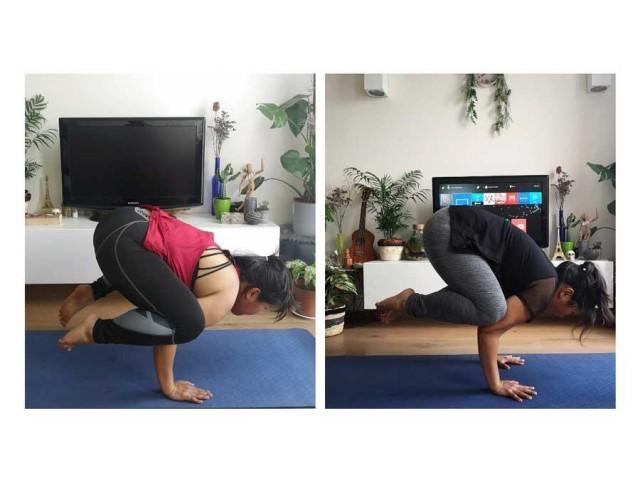
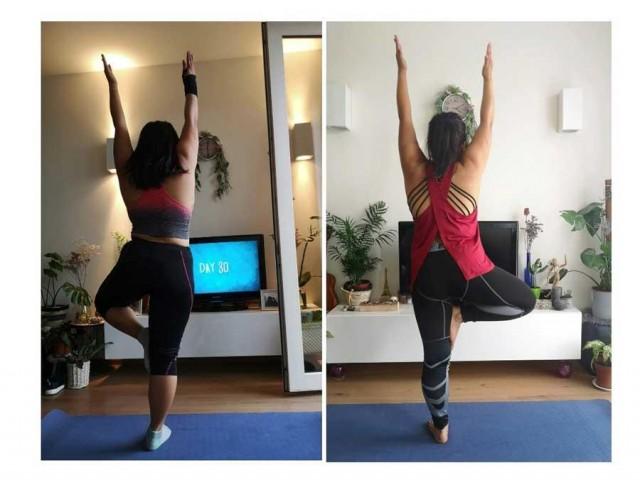
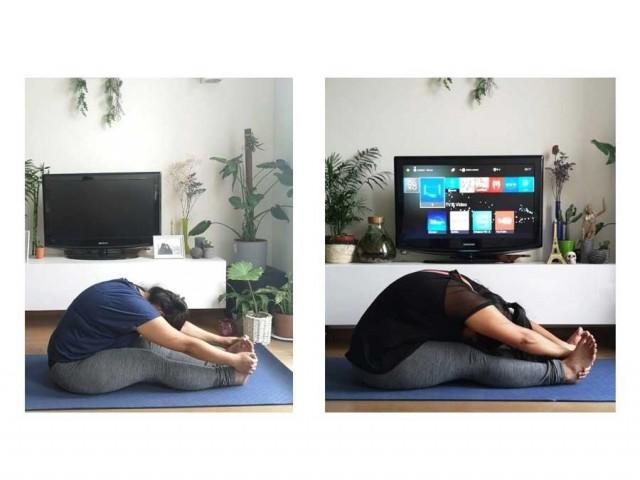

My tip for beginners: Allow yourself to do modifications whenever your body calls for it. Imperfection is perfect. It allows you to embrace failure and befriend your insecurities. Lay down that extra cushion for your butt. Bend those knees generously. Use a wall to balance. Pause the video tutorial if needed. You don’t have to be the perfect version of yourself; you only need to become better. Who knows, maybe you’ll find the best version of yourself in time.
4. Be mindful of your thoughts and actions
Mindfulness is another great lesson I’ve learned from the practice. Minding small, minute details has become a huge part of my life today, and I try my best to transcend this awareness outside the yoga mat.
This means that I try to apply mindfulness in my everyday life, starting from the kind of coffee I consume, the food I eat, the words I speak, or even the way I take care of my plants. Yoga is everyday life, and once you see this, your perspective on many things will change, sometimes even inadvertently.
Because of yoga, I became more mindful to the things I give my energy to. Is this worth my time? Is this worth my energy? Is it the kind thing to do?
It’s a struggle to become mindful and aware. It takes practice, but knowing consciously that you are in a journey towards mindfulness, is already a huge leap. Once you are aware of your thoughts and actions, you can also the see their consequences more clearly. Doubt becomes a benefit, a friend more than an enemy.
5. Being still is the hardest part
In my 30-day journey, I have learned that the practice of yoga is not a final destination to be reached, nor a goal to be achieved. It is coming home to the version of yourself that you somehow lost as you became busier in your daily routine, absorbing the many stimuli, rituals and practices of our society.
It is going back to the basics of simplicity, when you could listen to yourself, to your breath, and your spirit without distractions. It is restoration above all.
That is why the hardest part of yoga practice, in my opinion, is being completely still. It is the best part, believe me, but it is also the most difficult to achieve. Being in a state of stillness is one thing, but becoming completely still, that is another whole universe to explore. I myself am not there yet, but I continue to work towards it purposely and consciously.
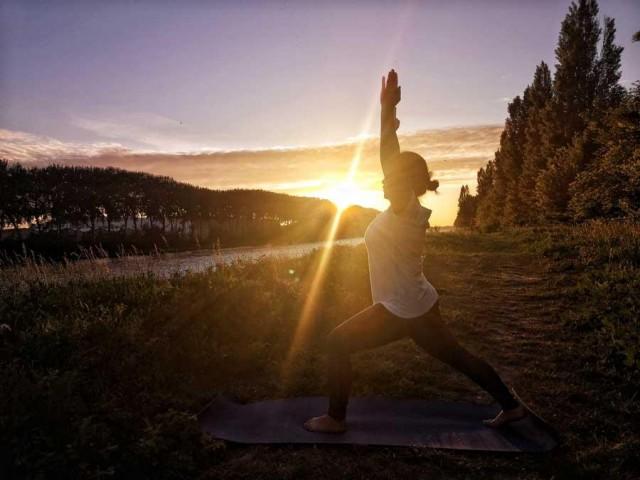
Tomorrow, I am going to embark on another journey, another 30 days of yoga. Sometimes I would find myself going beyond tutorials, doing my own versions of poses, in search of finding what feels good for my body.
I learned to experiment over time, with gentle caution of course. Accepting and learning that I am in full control of my body and mind has helped me deal with anxiety and the uncertainty of future amid this pandemic. Yoga has helped me accept that some things are out of my control, but I can take full control of my own well-being. I have so much to learn, still, and that’s probably my most favorite lesson from this journey as a student. — LA, GMA News



